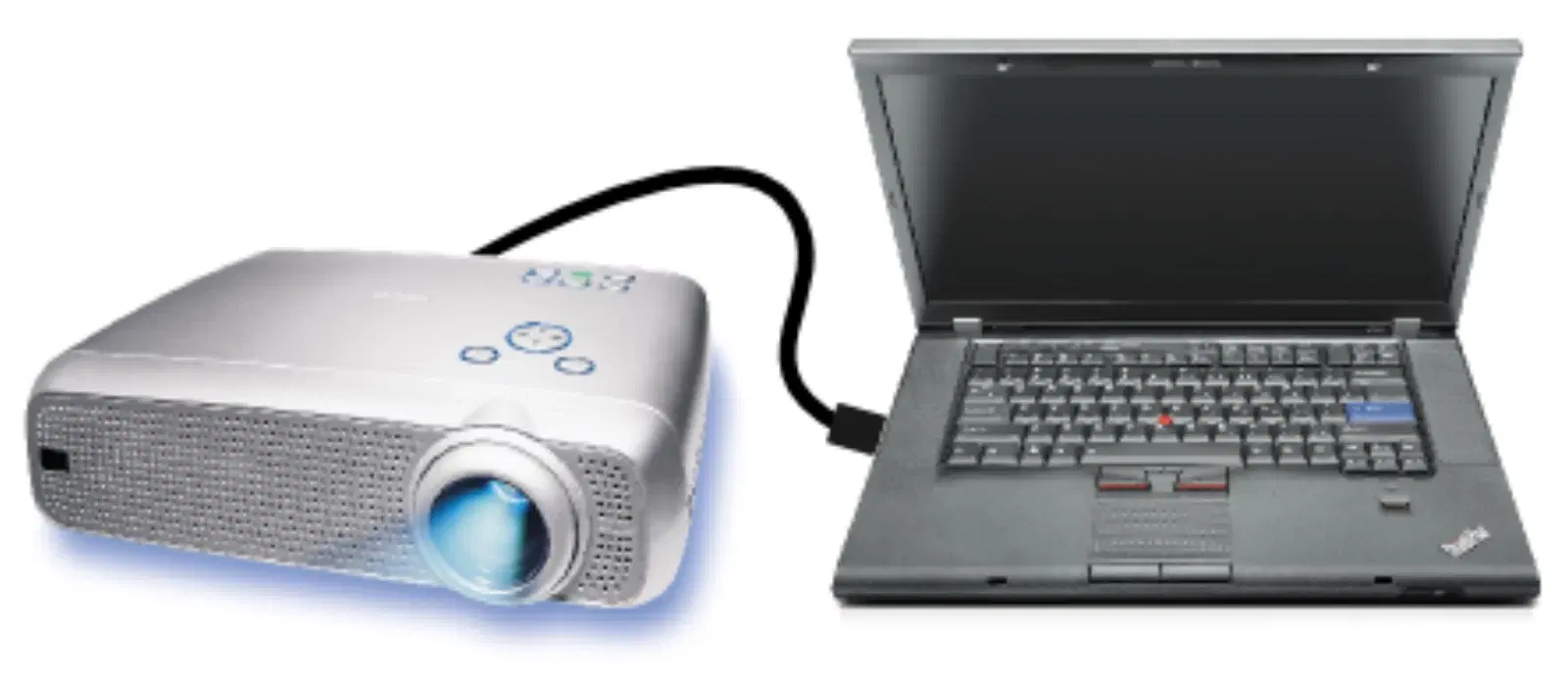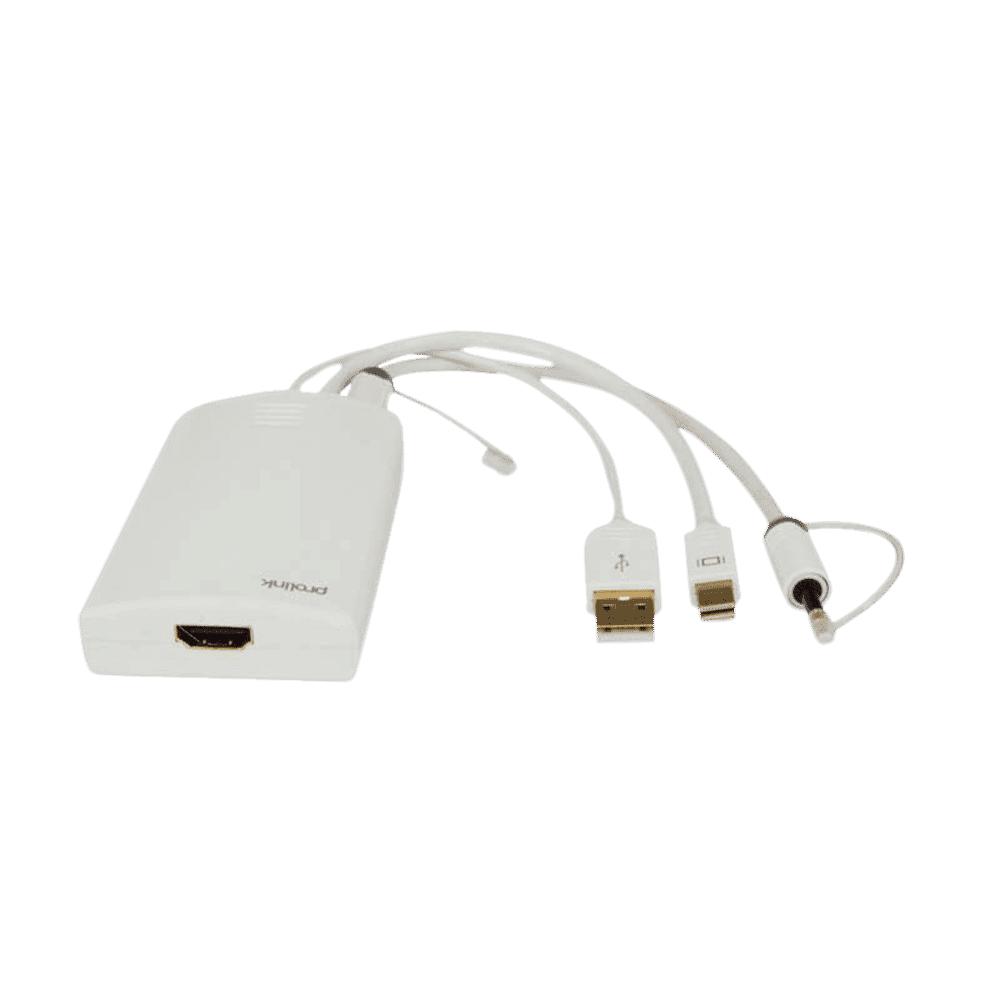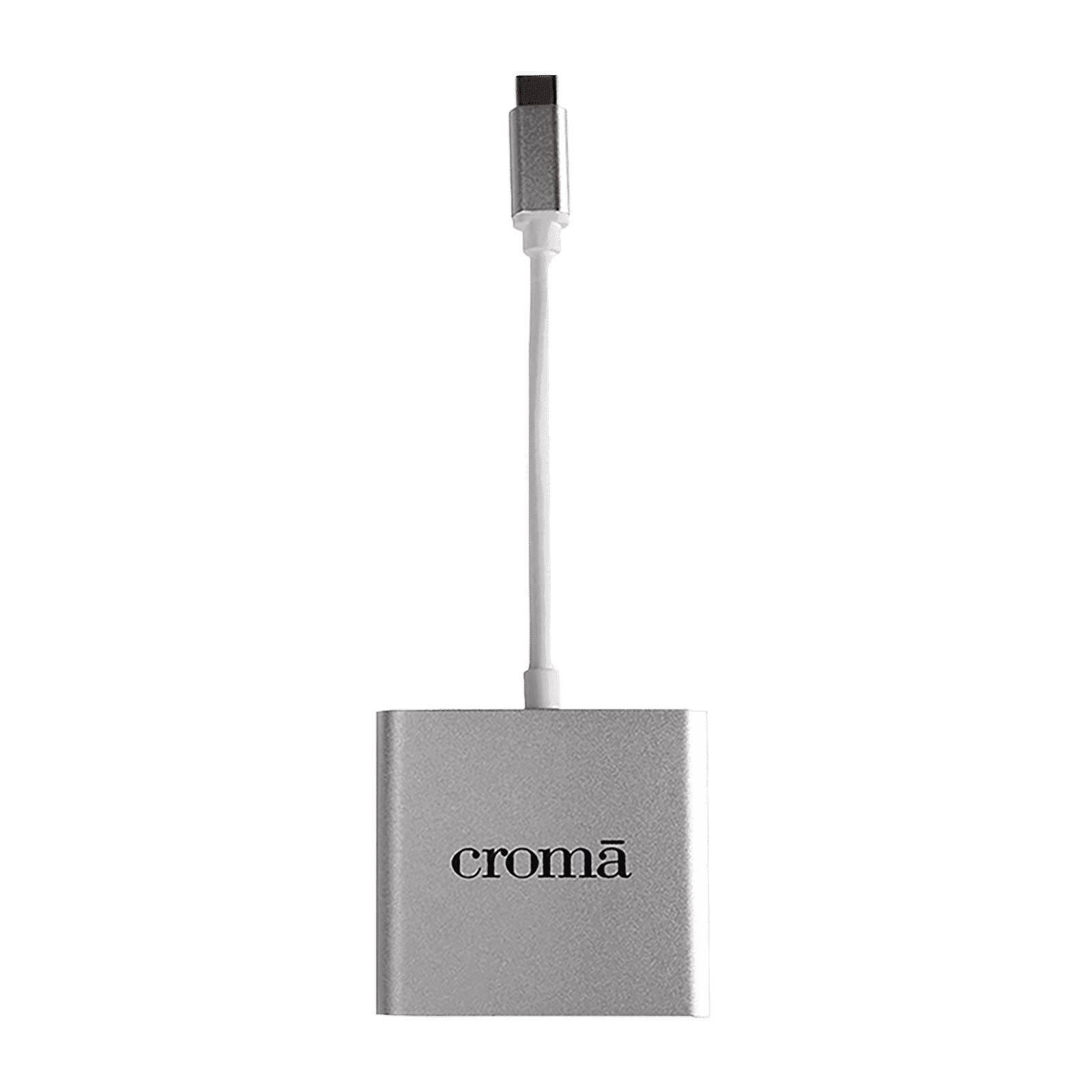
Consumer Electronics
•03 min read

Buy ultraprolink USB 3.1 Type C to USB 3.1 Type C, USB 3.0 Type A, HDMI USB Hub (Bi-Directional Flow, White) online at best prices from Croma. Check product details, reviews & more. Shop now!
Imagine connecting your USB device to an HDMI-enabled TV or monitor and transforming your small screen into a larger display. This guide walks you through the process of making that connection, enabling you to share presentations, stream videos, or extend your computer display effortlessly. By the end of this article, you will understand how to connect USB to HDMI effectively, explore the types of adapters and cables available, and learn how to troubleshoot common issues.
USB-to-HDMI is a technology that bridges the gap between a device's USB port and an HDMI display. This setup creates seamless integration between your laptop or smartphone and a large-screen display like a television or monitor. Whether you want to enjoy a movie on a bigger screen or present your work more effectively, using a USB-to-HDMI adapter helps turn your ideas into a visual reality.
There are several options available, from USB-to-HDMI adapters and converters to USB-to-HDMI cables. Their compatibility spans various port types including USB 2.0, USB 3.0, and USB-C. The choice you make depends largely on your device's specifications and the display output you require. Devices that support advanced interfaces like USB-C may offer enhanced video quality and faster data transfer speeds when connected to HDMI displays.
Before purchasing a device, check if your gadget supports USB-to-HDMI connections. Look into your device’s manual or online specifications to confirm compatibility. Also, ensure that you have the necessary drivers and that your operating system is up to date. This step is crucial to avoid any potential hiccups during setup.
Selecting the best adapter or cable involves considering your device's features, the required display resolution, and your budget. There are a variety of options to suit different needs, from basic adapters to more robust converters. It is always wise to opt for a product that offers hassle-free integration and reliable performance.

Buy Croma USB 3.0 Type C to USB 2.0 Type A, USB 3.0 Type C, HDMI Type A USB Hub (High-Quality Material, Silver) online at best prices from Croma. Check product details, reviews & more. Shop now!
Step 1: Insert the USB-to-HDMI adapter into the USB port of your device, ensuring a snug connection.
Step 2: Connect one end of the HDMI cable to the adapter and the other end to your TV or monitor.
Step 3: Power on both your device and the external display, making sure all connections are secure.
Step 4: Navigate to your device's display settings (such as Windows Display Settings or macOS System Preferences) to locate external display options.
Step 5: Select the HDMI display as your output source and adjust the resolution settings to match your display’s capabilities. This ensures that you receive the best possible picture, tailored to your viewing preference.
Insight Corner – "Did You Know?"
USB-to-HDMI adapters often require additional software or drivers to function properly. Always check whether the adapter is plug-and-play or requires installation before purchasing.
If the adapter is not detected, check for updated drivers or try reinstalling the existing ones. Confirm that your system meets the minimum requirements for the adapter and that the operating system supports it.
Should you encounter no signal on the HDMI display, ensure that the cable is securely connected and free from physical damage. Testing the adapter on another device or screen can help identify whether the issue lies with the hardware or the connection.
Displaying content with suboptimal quality may require a review of your resolution settings. Adjust them to fit within your TV or monitor’s capabilities. Using USB 3.0 or USB-C ports can also enhance data transmission speeds, minimising lag and improving overall video output.
Many professionals find that setting up dual monitors using a USB-to-HDMI adapter can greatly enhance productivity. This method allows you to extend your workspace without the need for multiple ports on your device. The ability to manage multiple displays efficiently is key to a more organised digital workspace.
USB-C offers advantages over traditional USB when it comes to video output, providing higher resolution support and faster data transfer speeds. When selecting an adapter, consider the benefits offered by USB-C if your device is compatible. This modern connection method ensures that you receive a clearer, more reliable display.
Yes, USB can output video and audio to HDMI through the use of an adapter that converts USB signals into HDMI-compatible data.
Yes, when you use a compatible adapter that is properly set up, these devices work effectively for bridging USB devices with HDMI displays.
Yes, albeit less commonly than adapters or converters. If you opt for a cable, make sure it is specifically designed to handle the conversion process.
Yes, this connection method can be used to either duplicate or extend your monitor displays, provided that your device supports external display configurations.
Many Samsung devices support USB-C to HDMI adapters for video output, though verifying compatibility with your specific model is important.
Connecting USB to HDMI opens up new possibilities for sharing content, streaming media, and expanding your digital workspace. With a clear understanding of various adapters, compatibility requirements, and the comprehensive setup instructions provided, you can effortlessly connect your USB device to an HDMI-enabled screen. Enjoy the NeuCoins rewards when shopping for related tech solutions on Tata Neu, a platform that combines trust, convenience, and innovation in one integrated experience. For those seeking smart shopping benefits and superior customer care, Tata Neu makes every transaction rewarding.